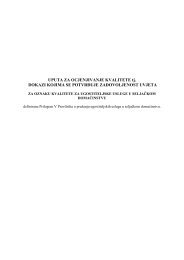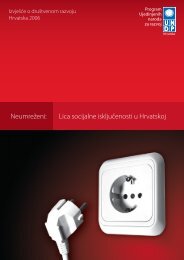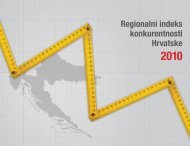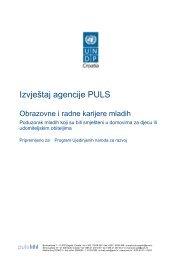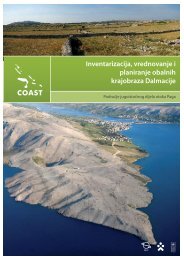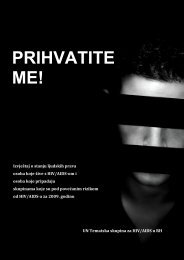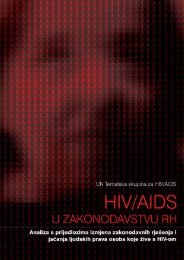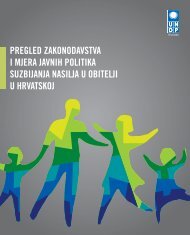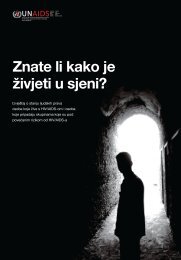WEB engleska verzija end.indd - UNDP Croatia
WEB engleska verzija end.indd - UNDP Croatia
WEB engleska verzija end.indd - UNDP Croatia
- No tags were found...
You also want an ePaper? Increase the reach of your titles
YUMPU automatically turns print PDFs into web optimized ePapers that Google loves.
THE SOCIALLY EXCLUDEDCHAPTER 3Table 3: Educational Structure of the population in <strong>Croatia</strong> according to age groups (in %)Education 15-24 25-6465+Primary school not completed (NSCE 0 and 1)Primary school (NSCE 2)Three-year secondary schools (NSCE 3.3)Four-year secondary schools and gymnasiums (NSCE 3.1)Two-year post-secondary schools (NSCE 5.2)Colleges, master’s and doctor’s degrees (NSCE 5.1 and 6)Total %3.7837.8625.4330.950.971.0110011.2819.6132.2720.915.210.7310056.9915.7912.727.243.124.14100Source: <strong>Croatia</strong>n Bureau of Statistics, Census 2001 (computed by the author)(aged 15 - 64). The share of the population who havegraduated from secondary school is 71.4%, while thesame group in the EU is only 67.9%. 38 However, thesame does not apply to post-secondary education.In <strong>Croatia</strong>, only 10.73% of the working contingenthas at least university education. 39 Students accountfor 2.84% of the total population, while in the EUstudents account for 3.79% of the total population.It can be concluded that <strong>Croatia</strong> has a relatively highshare of secondary school graduates, a considerableshare of an uneducated older population, and a lowshare of university graduates. 40The economically active population in <strong>Croatia</strong>(including both the employed and the structurallyunemployed who meet their statutory obligations towardsthe <strong>Croatia</strong>n Employment Bureau) account for44.18% of the total population, while the share of theemployed in the total population is 35.01%. 41 Retiredpeople account for 21.79% of the total population,and the ratio between the retired and the employedis 1:1.6. 42 This demonstrates a low share of employeesin the population and a very high number of retiredpeople. It is expected that in about ten years’ timethe number of retired people will increase, as the socalled“baby-boom” generation (those born before1960) will retire, while the less numerous generationswill enter the work force. This problem is closely relatedto the rate of registered unemployment, whichis about 17% (in April 2006, the rate was 17.6% and inMay 2006, it was 16.7%), 43 and the low fertility rate.Figure 5: Economically non-active population by status,Census 2001Domesticcaregivers12.31%Disabled fromwork2.37 %Children notatt<strong>end</strong>ingschool13.84%Other2.14 %Students30.16%Source: <strong>Croatia</strong>n Bureau of Statistics, Census 2001Retired persons39.18%38 Source: Eurostat, population and social conditions.39 Source: Central Bureau of Statistics, 2001 census (author’s calculations).40 Source: Eurostat, Population and social conditions (author’s calculations).41 Source: Central Bureau of Statistics, 2001 census42 Source: Central Bureau of Statistics, 2001 census (author’s calculations); the data in the census are different from the data of the <strong>Croatia</strong>nPension Insurance Institute (HZMO; 2003 Report), which mention the ratio of 1:1.37. The data differ because of the different way of makingthe calculation: the HZMO compares the number of insured persons and retired persons, while in the census the Central Bureau of Statisticscompares the number of employed persons and retired persons.43 Source: Central Bureau of Statistics, announcements 2006.41



